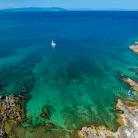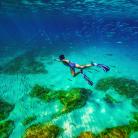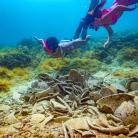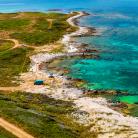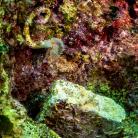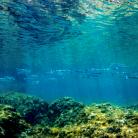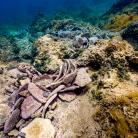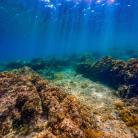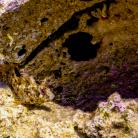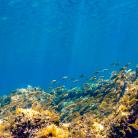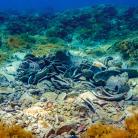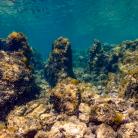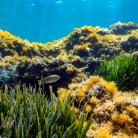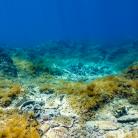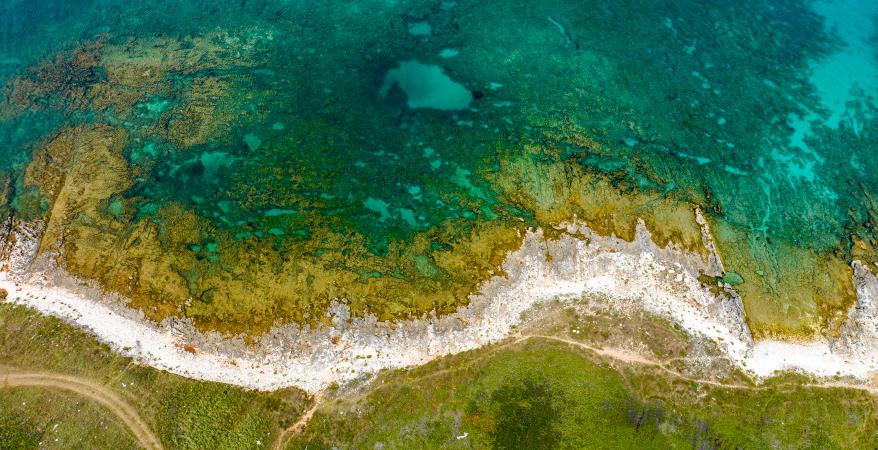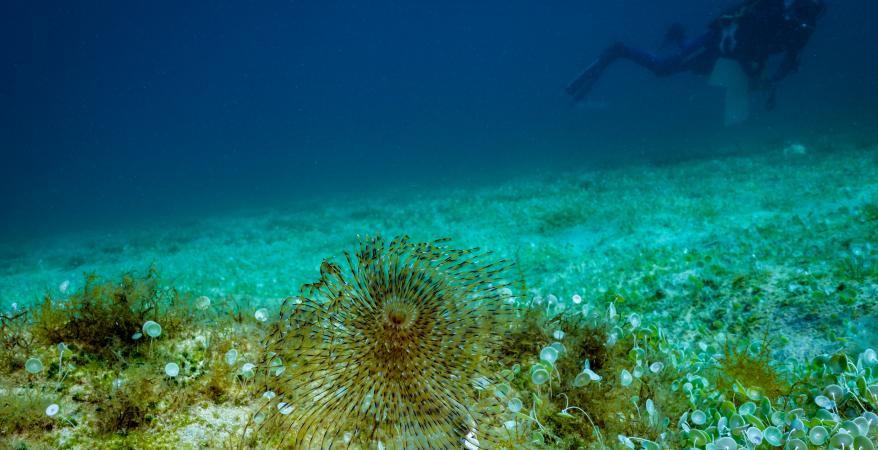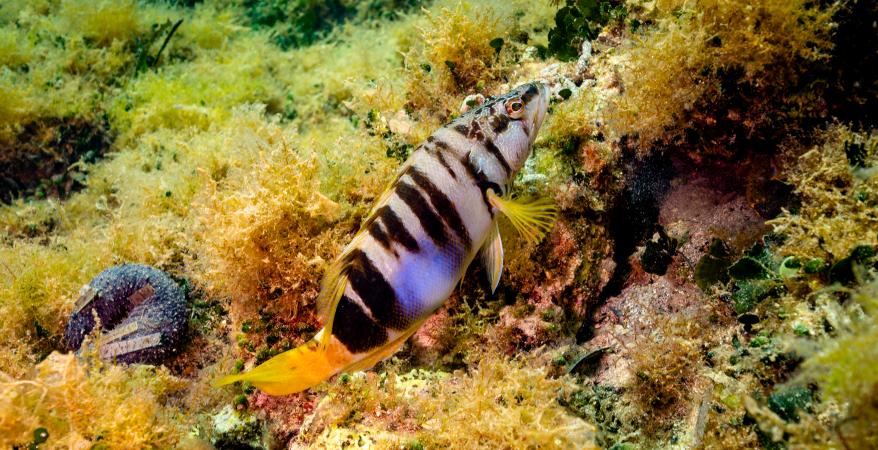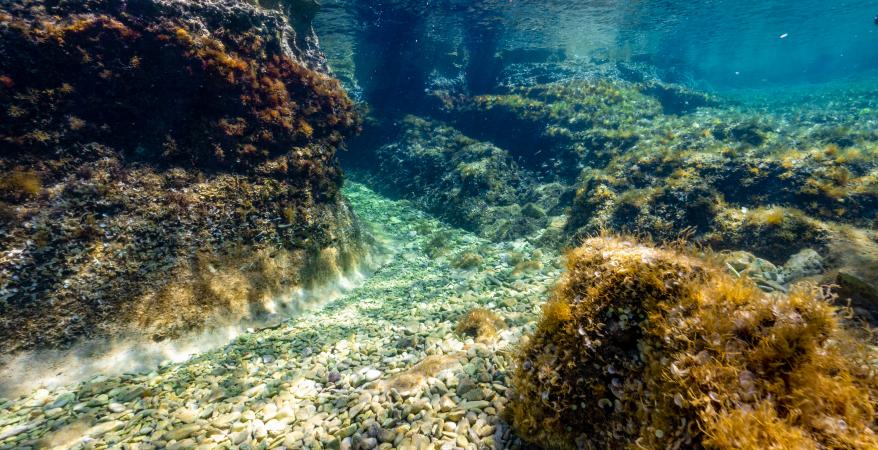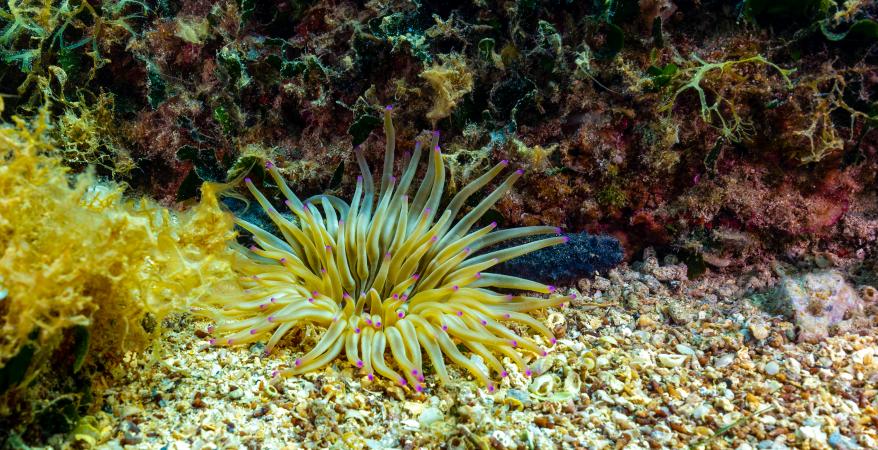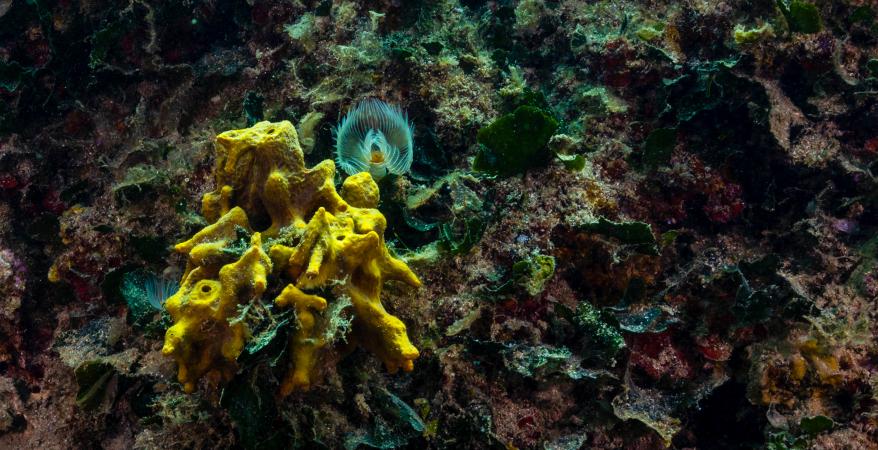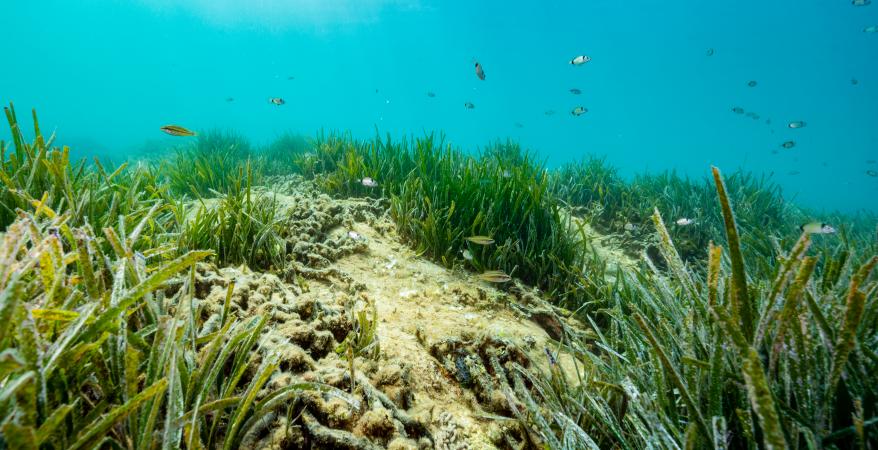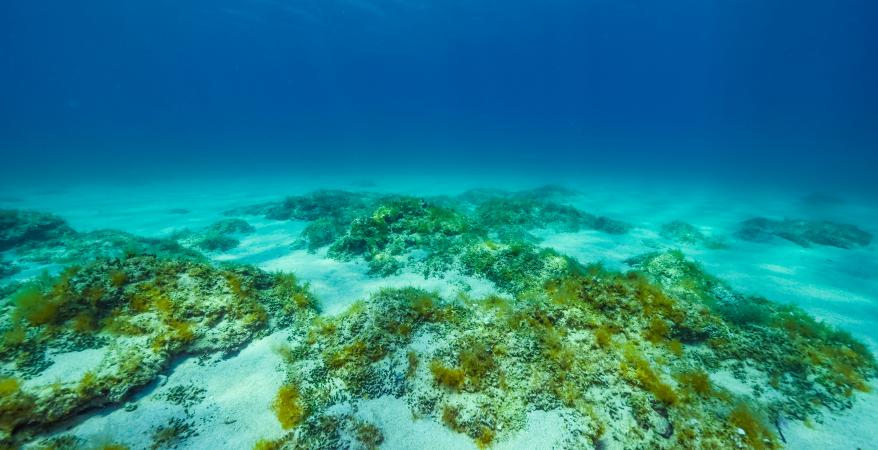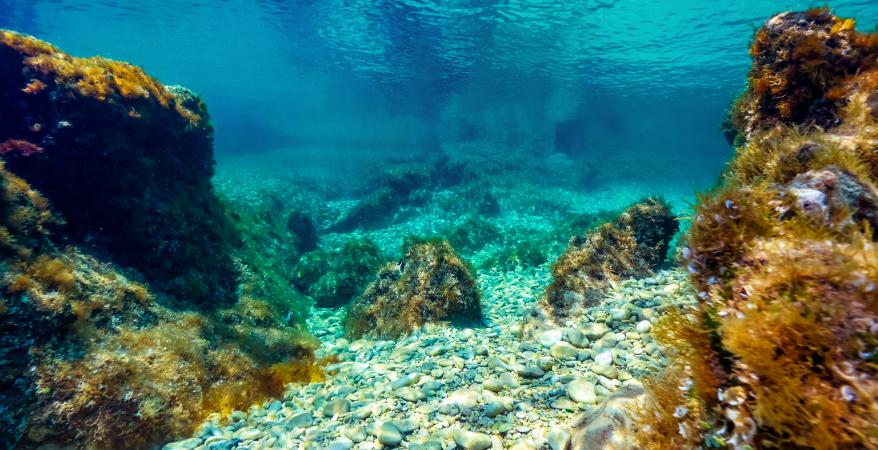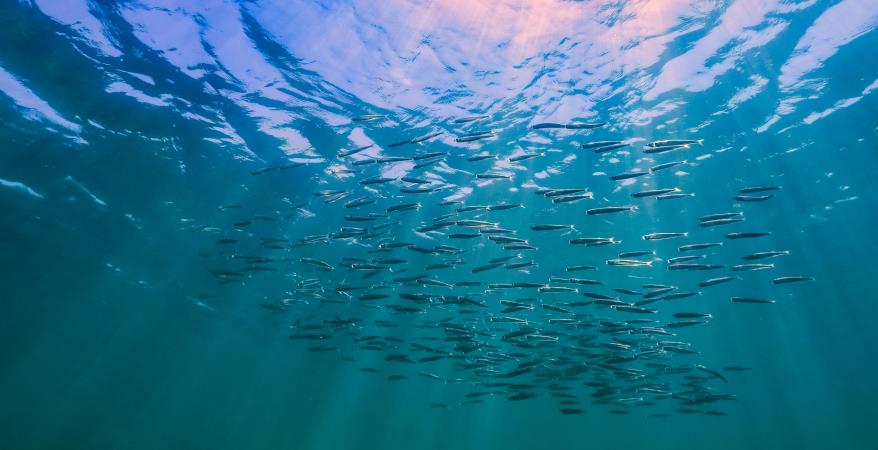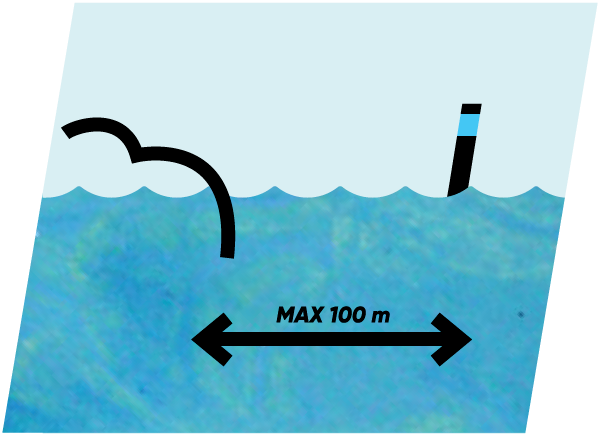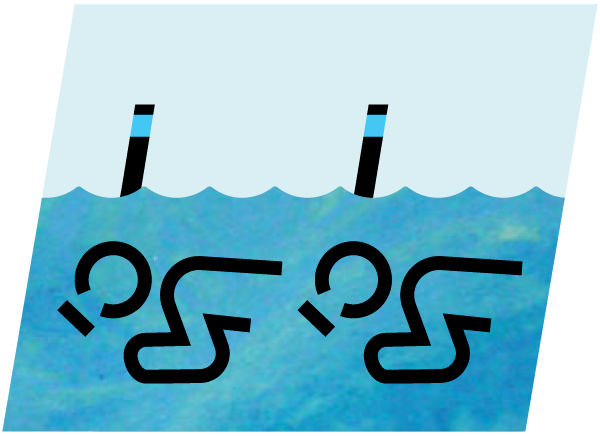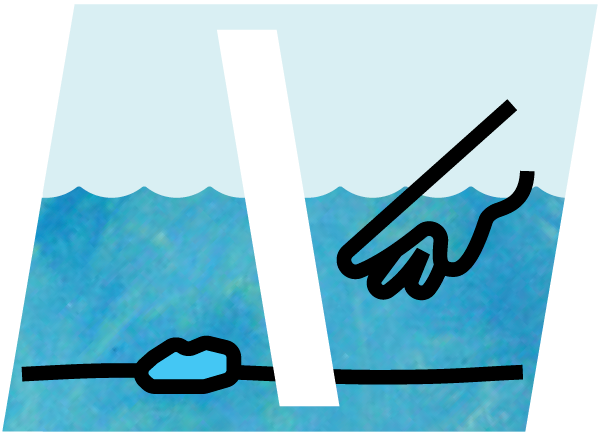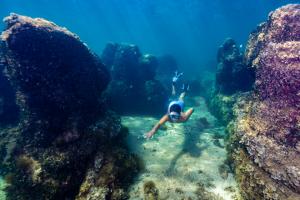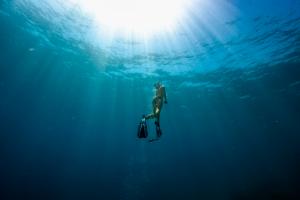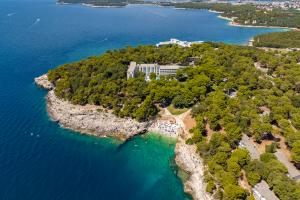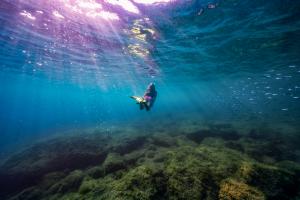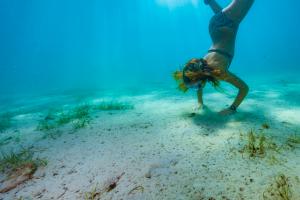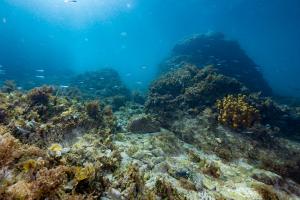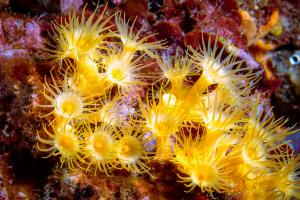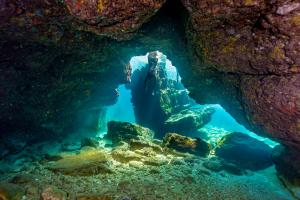Punta Uljeva
This snorkeling spot at Cape Uljeva is located more precisely at the southern entrance into the Bay of Kuje, known as Punta Uljeva. The small harbor in the bay of Kuje has been well-known since ancient times. Sailors traditionally found haven and shelter in that bay from the southern wind „Jugo“ and northern wind „Bura," which develop immense strength in the Kvarner area and blow in gusts or bursts that can reach the speed of up to 80 km per hour. Waters around Punta Uljeva are rather shallow, while the rocks almost spring out of the Sea. It is precisely for this reason that sailing along the eastern side of Istria in these waters has been rather challenging.
We can only imagine how dangerous this sailing route must have been during the Roman times when the sea level was 1 to 2 meters lower. This cape must have been carefully circumvented in a wide arc back then. However, strong surges of the storm and stormy weather made it difficult to enter the port safely, so it is not surprising that traces of ancient shipwrecks were found here. To reach this snorkeling site, go along the Bura Bura beach and continue along the dirt road via wild nature. When you arrive at the second junction, turn left towards the north. The road will get you to the small grassy plateau near the Sea with rocks in the front and small pebble beaches on the left and right sides. That is where you can enter the Sea and start exploring.
The snorkeling site is on the left when you look towards the sea. You will notice that the sea is foaming around the small stretch of land there, and cliffs emerge from the sea some 20 meters away, depending on the tide. On the way to Punta Uljeva, the seabed is rocky and mixed with sand. As you approach the tip of the land, the sea bottom becomes increasingly overgrown, mainly with brown and green algae.
Follow the coastline in the shallows ranging 1 to 2 meters in depth because it is there where you can encounter an exciting fish that builds a nest. It is greenish, its head dotted with turquoise stripes, easily recognized by the dark spot on the gill, and edged with a red and blue line. This fish, called Ocellated Wrasse is rather tiny, merely around 10 cm in size, but it is a hard worker. You will likely see her carrying a piece of algae in her mouth as she weaves a nest where she will preserve her eggs. The male builds a nest and keeps it neat and clean to seduce a female, who is brownish and of somewhat more petite size. Female birds often fly into his nest. This way, they check whether the male built the nest well. The nest is rolled-up nicely, hollowed in the middle, and the male bird is constantly spinning around it and tidying it up.
By swimming towards „Punta," you will notice a turquoise, more extensive pool of sand. On one side, it edges a small garden of Posidonia, a sea flower, and one sod grows on the sand. In its vicinity, there is a sandy cut where also grows Posidonia, which also leads towards the shallow water. Should you continue to follow the rift in the very shallow water, you will circumvent the cape towards its western arm.
By returning to the cliffs that emerge from the Sea, go across following the sand steps, and you will come across a stone arch through which the sun rays pass at a depth of 2 to 3 meters. Follow the coastline to return to the beginning of the itinerary. In the shallow water, you will be followed by schools of small Salema porgy recognizable by the golden stripes that run down the length of their bodies who tirelessly graze seaweed. Shallows with sandy seabed are ideal for photographing as they teem with schools of small fish.







